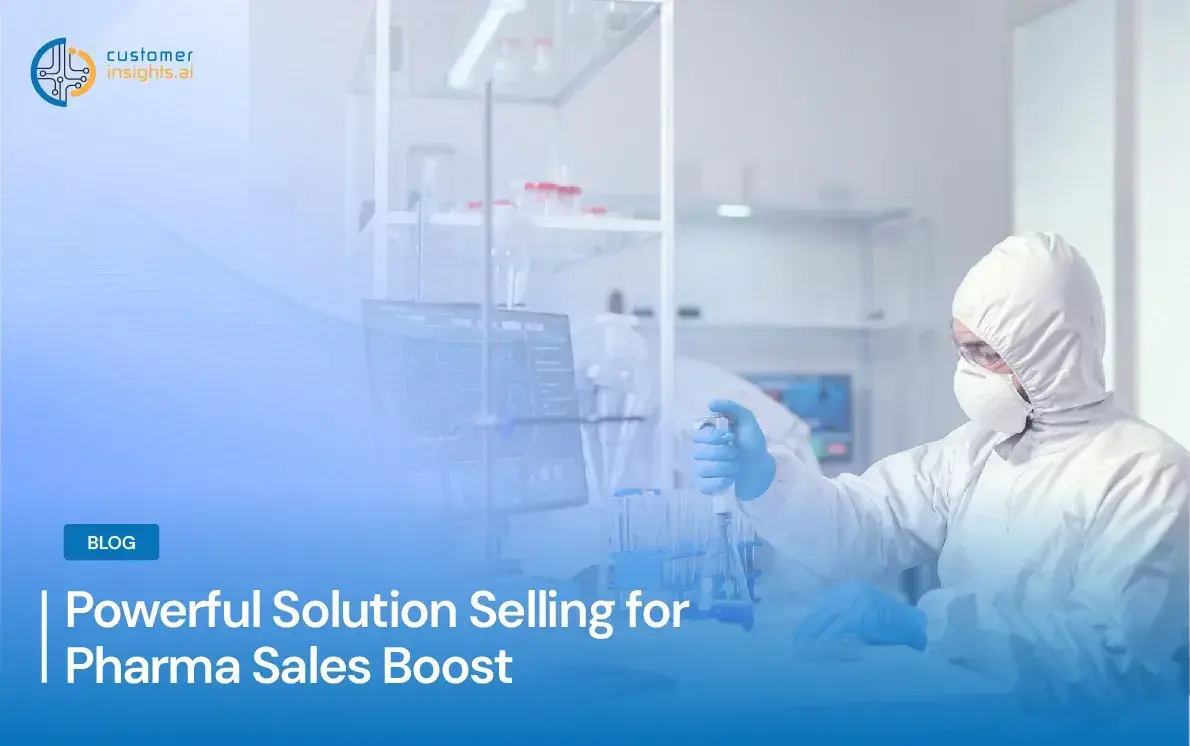
In today's competitive market, sales representatives in the pharmaceutical industry must have a deep understanding of their products and be able to effectively communicate the benefits and value they offer to potential customers, such as physicians and hospitals. One effective sales model for this industry is the solution selling model. This model focuses on understanding the customer's needs and finding the best solution to meet those needs, enabling sales representatives to have a more consultative approach and build trust and credibility with customers. In this article, we will delve into the solution selling model and how it can be applied in the pharmaceutical industry to drive successful sales outcomes.
The most effective sales model in the pharmaceutical industry is typically the solution selling model. This is because it focuses on understanding the customer's needs and finding the best solution to meet those needs. In the pharmaceutical industry, sales representatives need to have a deep understanding of their products and be able to effectively communicate the benefits and value they offer to potential customers, such as physicians and hospitals. The solution selling model enables sales representatives to have a more consultative approach, building trust and credibility with customers and ultimately leading to more successful sales.
The Solution Selling Model is a customer-focused approach to sales that emphasizes understanding the customer's needs and finding the best solution to meet those needs. It involves:
- Qualifying the customer: determining if they have a need and if they are a good fit for the solution being offered.
- Discovering customer needs: actively listening and asking questions to understand the customer's pain points, challenges, and goals.
- Presenting a solution: customizing the pitch to address the customer's specific needs and demonstrating how the offered solution addresses those needs.
- Overcoming objections: anticipating and addressing any concerns or objections the customer may have.
- Closing the sale: securing agreement and commitment from the customer to proceed with the solution.
This model is often used in industries where complex products and services are sold, such as technology, healthcare, and financial services, where customers are looking for solutions to specific problems rather than just a product or service.
There are several successful solution selling models, some of the most popular include:
- Challenger Sale: This model emphasizes challenging the customer's current thinking and offering a new perspective on their problems.
- SPIN Selling: This model focuses on uncovering the customer's specific pain points, identifying their needs, presenting a solution, and handling objections.
- Consultative Selling: This model involves becoming a trusted advisor to the customer by understanding their business, identifying their needs, and offering tailored solutions.
- Solution-focused Selling: This model emphasizes finding the right solution to meet the customer's specific needs, rather than trying to fit the customer into a predetermined solution.
- Value-based Selling: This model focuses on demonstrating the value the solution offers to the customer, rather than just its features and benefits.
These models have been successful in different industries, and the choice of which one to use often depends on the specific needs and goals of the sales team and the customer. Choosing the right solution selling model for a pharmaceutical company will depend on a variety of factors, including the size of the company.
General recommendations for choosing a solution selling model, based on the size of the company:
- Small to medium-sized companies: For small to medium-sized companies, a flexible model like SPIN Selling or Solution-focused Selling may be more effective. These models are less rigid, allowing sales representatives to adapt to the specific needs and goals of each customer.
- Large companies: For large pharmaceutical companies, a more structured model like Challenger Sale or Value-based Selling may be more effective. These models provide a clear framework for sales representatives to follow, ensuring consistency and efficiency in the sales process.
The selection of a solution selling model ultimately hinges on several factors, including the organization's culture, product type, call points (e.g., physician's office, alternative care site, hospital setting), and the sales team's particular goals and objectives. To identify the optimal fit for the company, it may be beneficial to experiment with and gather feedback on various models from sales representatives through pilot testing.
Lead the Charge with CustomerInsights.ai's PLAaaS, the Key to Driving Innovation, Boosting Commercial Outcomes, and Cutting Operational Costs. Feel free to drop me a note, rafi.vartanian@customerinsights.ai to learn more about how our ML based technology and experts can help.
